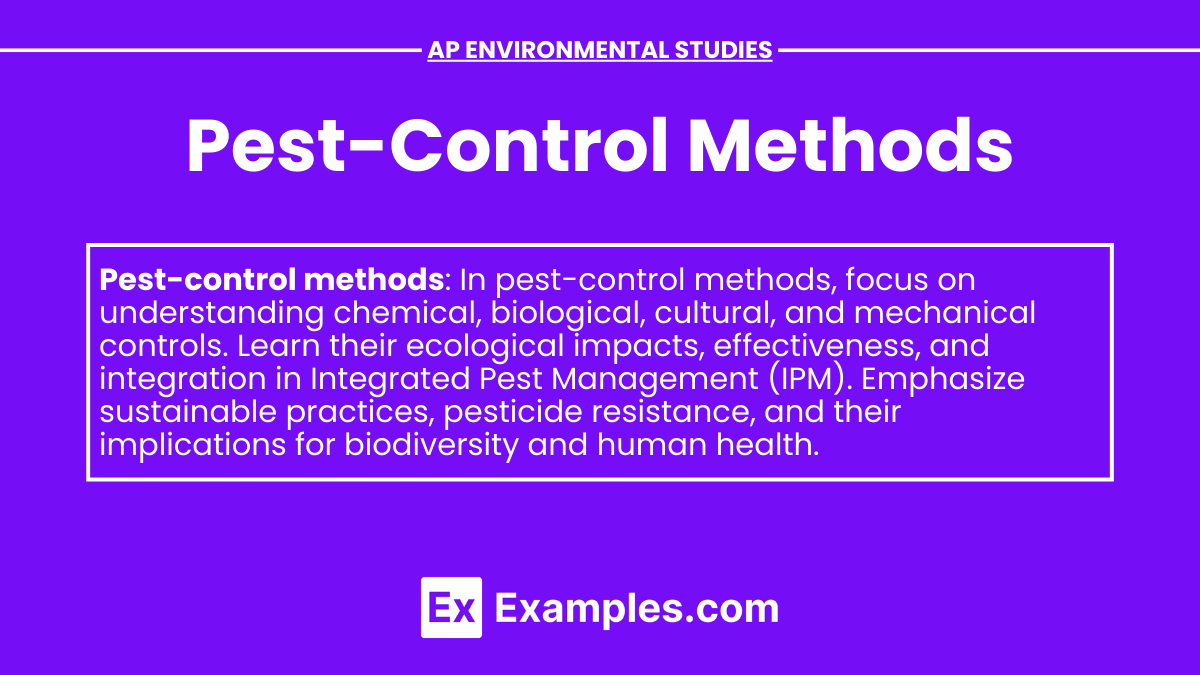The Pestwise Statements
The Pestwise Statements
Blog Article
The Of Pestwise
Table of ContentsPestwise for BeginnersThe Main Principles Of Pestwise A Biased View of PestwiseHow Pestwise can Save You Time, Stress, and Money.The Basic Principles Of Pestwise All about PestwiseIndicators on Pestwise You Need To Know

Q. Define "incorporated bug management" (IPM) and checklist a number of possible control strategies that might be utilized in an IPM technique. A. Integrated pest monitoring is the integrating of suitable parasite control strategies right into a single plan to lower insects and their damage to an appropriate degree. Bug control techniques might include: host resistance, organic control, social control, mechanical control, cleanliness, and chemical (pesticide) control.
The Buzz on Pestwise
What can you do to maintain the insects you are trying to regulate from ending up being resistant to the chemicals you utilize? A. Parasite resistance can be minimized by utilizing integrated insect management and rotating the sorts of pesticides used.
Pests are an important risk to the farming organization, and incorporated pest management helps growers address and reduce these threats. Integrated bug monitoring utilizes several methods in complex, thus being a more efficient option to the concern. Termite Treatment. Specifically, removing hostile chemical techniques permits minimizing harm to individuals and the environment by utilizing all-natural and more secure alternatives rather
Pestwise - An Overview
The objective of incorporated insect monitoring is to reduce this injury and control appropriate invasion levels as opposed to eliminate all undesirable populaces. This is why it is necessary to comprehend what procedures are justified in each case and use hostile ones only when various other integrated management methods do not work. Integrated monitoring alleviates the negative consequences of a non-IPM method, and the main benefits of IPM Conveniences of IPM.
An appropriate understanding of the problem range identifies if the problem needs to be addressed. are the following components of an IPM program because it is very important to understand if the organisms make possible threats and choose the incorporated monitoring options or the specific chemical usage. mean to lower invasions by using different agronomic strategies.
Pestwise - Truths
Integrated monitoring alternatives in an IPM program beginning with safer to more hostile ones. The prior integrated management elements help recognize exactly how to plan and Our site execute an IPM program step by action: Monitor your crops on a regular basis.

Amongst others, IPM cultural methods consist of the adhering to area monitoring methods: dirt treatment; choice of suitable plants; plant turning; interplanting or strip chopping; selection of growing dates; weed control; use of trap plants. Desirable soil conditions speed up plant development, and energetic crops are more resistant to problems. Healthy and balanced seed startings and seeds predetermine successful plant advancement, so it is important to pick pest-free planting product with solid roots.
Hence, to name a few applications, plant turning can be efficiently used as an integrated bug administration approach. Pests spread slower if rows of various crop kinds separate their host plants in intercropping or strip chopping, which is additionally utilized in the incorporated pest monitoring system. Conversely, problems increase when plants of the exact same plant type or family grow together.
, as well as tomatoes. Growing catch plants in spots is one more choice for IPM intercropping. This integrated parasite management approach recommends attracting pests to certain plants and then managing them with chemical or mechanical methods.
The Basic Principles Of Pestwise
Obstacles are normal examples of physical IPM techniques. Fully grown bugs or their eggs and larvae are collected by hand and destroyed.

Division of Plant Sciences. This incorporated administration technique indicates an usual way of damaging pests by killers, parasitoids, microorganisms, and other biological control representatives (aka hostile organisms). The function of organic control in IPM is to.
A Biased View of Pestwise
With time, their population became an actual nuisance to farmers alongside aboriginal kangaroos or dingoes. The cane toad is another case illustrating integrated organic control failure in this respect when it rejected to quest the target varieties and came to be a bug itself. Parasitoids establish on or within their hosts to at some point eliminate them after growing.
Report this page